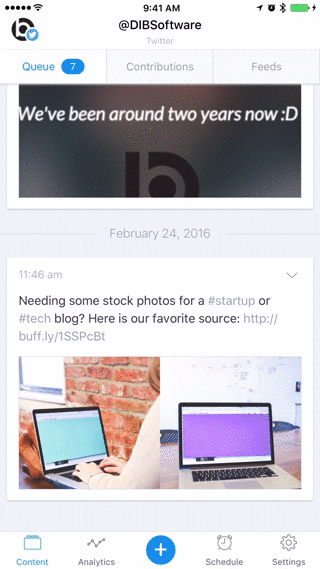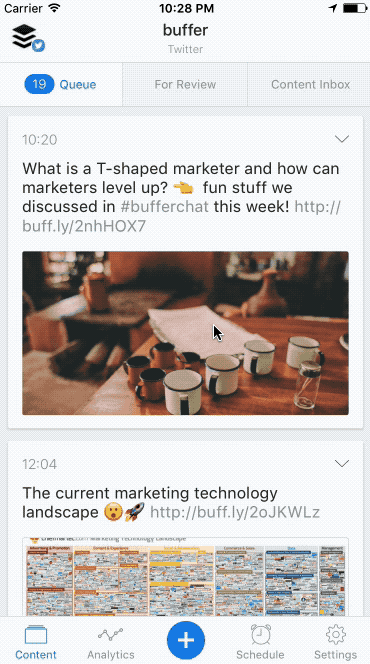The BFRImageViewer is a turnkey solution to present images within your iOS app 🎉!
It features swipe gestures to dismiss, automatic image scaling, zooming and panning, supports multiple images, image types, URL backloading, custom view controller transitions, built in parallax effect, live photos and plays nicely with 3D touch! We use it all over the place in Buffer for iOS :-).
We've got code samples of each feature in the demo app, feel free to take a peek 👀.
The BFRImageViewer is hosted on CocoaPods and is the recommended way to install it:
pod 'BFRImageViewer'To get up and running quickly with BFRImageViewer, just initialize it - that's really about it!
//Image source can be an array containing a mix of PHAssets, NSURLs, URL strings, UIImage, PHLivePhoto or BFRBackLoadedImageSource
BFRImageViewController *imageVC = [[BFRImageViewController alloc] initWithImageSource:@[image]];let imageVC = BFRImageViewController(imageSource: [image])From there, you'll have every photo automagically loaded up and be able to page between them. If you want some additional context, just fire up the demo project and take a peek 👌!
If you'd like to use a custom view controller transition, which zooms the selected image into the image viewer, just set up some properties on the dedicated image viewer animator class:
// In viewDidLoad...
self.imageViewAnimator = [BFRImageTransitionAnimator new];
// Later on, when you want to show an image...
self.imageViewAnimator.animatedImageContainer = self.imageView;
self.imageViewAnimator.animatedImage = self.imageView.image;
self.imageViewAnimator.imageOriginFrame = self.imageView.frame;
self.imageViewAnimator.desiredContentMode = self.imageView.contentMode; //Optional
BFRImageViewController *imageVC = [[BFRImageViewController alloc] initWithImageSource:@[self.imageView.image]];
imageVC.transitioningDelegate = self.imageViewAnimator;
[self presentViewController:imageVC animated:YES completion:nil];That will give you this effect (excuse the low quality gif 🙈):
Say you've got a thumbnail of an image, but also a URL of the higher fidelity version too. Using URL backloading, you can quickly show the lower resolution image while loading the better version in the background. When it loads - we'll automatically swap it out for you. This allows you to have the best of worlds. You don't need to have users wait for the URL to load, or settle for always viewing the degraded image.
- (void)openImageViewer {
BFRBackLoadedImageSource *backloadedImage = [[BFRBackLoadedImageSource alloc] initWithInitialImage:[UIImage imageNamed:@"lowResImage"] hiResURL:[NSURL URLWithString:@"cdn.theURl.png"]];
BFRImageViewController *imageVC = [[BFRImageViewController alloc] initWithImageSource:@[backloadedImage]];
[self presentViewController:imageVC animated:YES completion:nil];
}We regularly maintain this code, and you can also rest assured that it's been battle tested against thousands of users in production 👍. That said, we get things wrong from time to time - so feel free to open an issue for anything you spot!
We are always happy to talk shop, so feel free to give us a shout on Twitter:
- Andy - @ay8s
- Jordan - @jordanmorgan10
Or, hey - why not work on the BFRImageViewer and get paid for it!? We're hiring!
This project uses MIT License.




